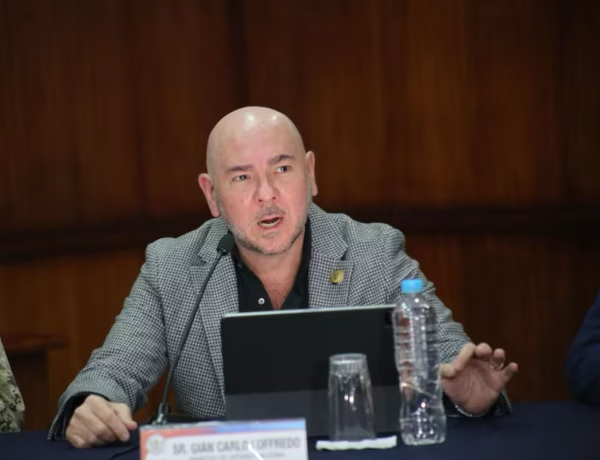Ecuador currently finds itself embroiled in a multifaceted cultural battle that extends beyond conventional struggles associated with crime and violence. Minister of National Defense, Gian Carlo Loffredo, has underscored the alarming rise of “narcoculture,” a destructive social phenomenon that promotes values of violence and criminality, particularly among the nation’s most vulnerable populations. He articulated the need for a robust national identity that can serve as a bulwark against the detrimental influences of this culture. “Education, art, and culture must be tools to build and not destroy,” Loffredo asserted in a recent press conference, indicating a strategic pivot towards fostering positive societal influences.
Narcoculture, which encompasses the glorification of drug trafficking and associated lifestyles, is not unique to Ecuador but has been exacerbated by escalating activities from criminal organizations within the country. Recent observations reveal that young people are especially susceptible to its allure, spurred by a lack of opportunities and a relentless barrage of media that romanticizes the drug trade. This cultural infiltration poses significant challenges to governmental initiatives aimed at fostering social cohesion and stability. As educators and reformers probe the depths of this problem, it becomes increasingly evident that bolstering youth resilience through education and alternative cultural narratives is critical to combatting these pervasive anti-values.
In light of this challenge, Loffredo has positioned education as the foremost weapon against narcoculture, suggesting that neglecting this vital area will lead to increased investments in violence and security measures instead. He has called for immediate policy reforms to ensure equitable access to quality education, particularly in rural and marginalized communities where narcoculture holds a particularly strong sway. The Ministry of Defense has initiated programs to engage students in military-run schools, aiming to reinforce a sense of values and security. However, Loffredo emphasizes that these measures must be part of a more extensive, collaborative effort involving families, local communities, and cultural stakeholders if meaningful change is to be realized.
Beyond education, the minister has highlighted the power of art and music as potential vectors for change. He advocates for the generation of artistic content that promotes positive societal values and community upliftment. However, this message is punctuated with controversy; during a recent musical festival in Quito, a provocative display of a cardboard cutout of President Daniel Noboa sparked debates over freedom of expression versus threats of violence. This underscores a critical juncture that society must navigate, balancing the need for artistic liberation with the potential consequences of misinterpreted expressions of dissent.
On the ground, the Ecuadorian government grapples with acute security issues, particularly evident in regions such as El Oro, where over 2,500 soldiers and tactical vehicles have been deployed to counteract organized crime. While this military presence reflects the urgency of the crisis, it raises questions about the sustainability and efficacy of a purely militarized response to complex social issues. Such a response may temporarily address symptoms of the crisis, but durable solutions necessitate a broader engagement with community dynamics, poverty alleviation, and cultural development.
Ultimately, Ecuador’s struggle against narcoculture represents a broader confrontation with issues of identity and societal values. Loffredo warns that without acknowledging the profound impact of vulgarity on the arts, genuine progress and unity will be thwarted. The country has an invaluable opportunity to redefine its cultural landscape and to challenge the status quo through innovative and creative solutions that resonate with its citizens. Success hinges upon political will, the active engagement of civil society, and a shared commitment to fostering a cultural identity rooted in resilience, hope, and positivity against the shadow of criminality.

